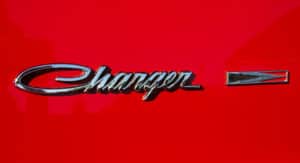
The Dodge Charger was a model of car produced by Dodge. The 1966 to 1974 Chargers were sporty models based on the Chrysler B platform that could be ordered with high-performance options. The 1975 to 1978 Chargers were based on the Chrysler Cordoba. The Dodge Charger R/T was one of the largest muscle cars available in the 1970s.
Carl “CAM'” Cameron would be the exterior designer of Dodge’s new flagship vehicle, and on January 1, 1966, viewers of the Rose Bowl were first introduced to the new “Leader of the Dodge Rebellion”, the 1966 Charger. The Charger’s introduction coincided with the introduction of the new street version of the 426 Hemi. Finally, Dodge would have the performance image to go along with this performance engine.
As the 1966 Charger’s features would go, the “electric shaver” grille used fully rotating headlights, not seen on a Chrysler product since the 1942 DeSoto, that when opened or closed made the grille look like one-piece. Inside, the Charger used four individual bucket seats with a full length console from front to rear. The rear seats and console pad also folded forward, and the trunk divider dropped back, which allowed for lots of cargo room inside. Many other things were exclusive to the Charger such as the door panels, courtesy lights and the instrument panel.
1966 Charger dashThe instrument panel was especially interesting as regular bulbs weren’t used to light the gauges. Instead four electroluminescent dash pods housed the tachometer, speedometer, alternator, fuel and temperature gauges. In the rear the full length taillight read CHARGER.
The engine selection was all V8s. A six cylinder engine didn’t make the option list until 1968. In 1966 four engines were offered; the base-model 318 in³ (5.2 L) 2-barrel V8, the truck-sourced 361 in³ (5.9 L) 2-barrel, the 383 in³ (6.3 L) 4-barrel, and the new 426 Street Hemi. The majority of 1966 Chargers were ordered with the 325 hp 383.
Total production in 1966 came to 37,344 units, which was successful for the mid-year introduction.
In 1966 Dodge took the Charger into NASCAR in hopes that the fastback would make their car a winner on the high-banks. But the car proved to have rear end lift around corners which made it very slippery on the faster tracks. The lift was because the air actually traveled faster over the top of the car than under it, causing the car to act like a giant airplane wing. Drivers would later claim that “it was like driving on ice.” In order to solve this problem Dodge installed a small lip spoiler on the trunk lid which improved traction at speeds above 150 mph. They also had to make it a dealer-installed option in late 1966 and through 1967 because of NASCAR rules (with small quarter panel extensions in 1967). The 1966 Charger was the first US production vehicle to have a spoiler.
Since the Charger was such a sales success despite its midyear introduction, changes were limited for 1967. Outside, new fender-mounted turn signals were introduced and would serve as the main outside identifier between a 1966 and 1967 Charger. A vinyl roof become available as well. Inside, the full length console was gone, due in part to customer complaints about entry and exit from the back seats. It was replaced with a regular sized console. Bucket seats were standard, but a folding armrest/seat and column shifter was an option allowing three people to sit up front.
As for engine options, the 440 “Magnum” was added and the 361 in³ engine was replaced by a 383 in³ engine. The 440 was conservatively rated at 375 hp with a single 4-barrel carburetor. The 318 two-barrel engine remained, although it was now the modern Chrysler LA engine with wedge-shaped combustion chambers, unlike the outdated 1966 polyspherical (or “poly”) design. The 383 4-barrel and the 426 Street Hemi remained as options.
Despite the Chargers’ NASCAR racing success of 1966, sales slipped by half. In 1967 only 15,788 Chargers were sold. The Chargers faced competition from the Trans-Am Series, the Ford Mustang and the just introduced Chevrolet Camaro. Dodge decided that a major redesign was in order, rather than a minor face-lift.
It was clear after the sales drop of the 1967 Charger that a restyle was in order. Dodge was going to restyle their entire B-body lineup for 1968 and decided that it was time to separate the Coronet and Charger models even further. What designer Richard Sias came up with was a double-diamond design that would later be referred to as coke bottle styling. From the side profile the curves around the front fenders and rear quarter panels look almost like a Coke bottle. Front and rear end sheet metal was designed by Harvey J Winn. The rear end featured a “kick up” spoiler appearance, inspired by Group 7 racing vehicles. On the roof a “flying buttress” was added to give the rear window area a look similar to that of the 1966-67 Pontiac GTO. The Charger retained its full-length hidden headlight grille, but the fully rotating electric headlights had been replaced by a simple vacuum operated cover, similar to the Camaro RS. The full length taillights were gone as well. Instead, dual Corvette-inspired taillights were added at the direction of Styling Vice President, Elwood P. Engel. Dual scallops were added to the doors and hood to help accent the new swoopy lines. Inside, the interior shared almost nothing with its first generation brothers. The four bucket seats were gone, the console remained the same as the ’67. The tachometer was now optional instead of standard, the trunk and grille medallions were gone, the carpeting in the trunk area was gone, replaced by a vinyl mat, the rear seats did not fold forward and the space-age looking electroluminescent gauges disappeared in favor of a more conventional looking design.
In order to further boost the Charger’s muscle car image, a new high-performance package was added, the R/T. This stood for “Road/Track” (no ‘and’ between Road and Track) and would be the high performance badge that would establish Dodge’s performance image. Only the high performance cars were allowed to use the R/T badge. The R/T came standard with the previous year’s 440 “Magnum” and the 426 Hemi was optional. The standard engine was the 318 2bbl the rest of the engine lineup (383-2, 383-4) remained unchanged.
In 1968 Chrysler Corporation unveiled a new ad campaign featuring a Bee with an engine on its back. These cars were called the “Scat Pack”. The Coronet R/T, Super Bee, Dart GTS and Charger R/T received bumble-bee stripes (two thin stripes framing two thick stripes). The stripes were standard on the R/Ts and came in red, white or black. They also could be deleted at no cost. These changes and the new Charger bodystyle proved to be very popular with the public and helped to sell 96,100 Chargers, including over 17,000 Charger R/Ts.
A famous Charger was the four-speed, triple-black 1968 Charger R/T used in the movie Bullitt. The chase scene between Steve McQueen’s fastback Mustang GT and the hitmen’s Charger R/T is popularly regarded as one of the greatest car chase scenes ever filmed. During filming of the scene, the Charger proved to be extremely durable. When performing the various jumps over the hills in San Francisco, the Mustang GT encountered several suspension problems, while the suspension of the Chargers used never failed once.
A similar 1968 Charger R/T was seen in the Blade films.
In 1969 not much was changed for the popular Charger. Exterior changes included a new grille with a center divider and new longitudinal taillights both designed by Harvey J. Winn. A new trim line called the Special Edition (SE) was added. This could be available by itself or packaged with the R/T, thus making an R/T-SE. The SE added leather inserts to the front seats only, chrome rocker moldings, a wood grain steering wheel and wood grain inserts on the instrument panel. A sunroof was added to the option list as well, and it would prove to be a very rare option (some 260 sold). The bumble bee stripes returned as well, but were changed slightly. Instead of four stripes it now featured one huge stripe framed by two smaller stripes. In the middle of the stripe an R/T cutout was placed. If the stripe was deleted, then a metal R/T emblem was placed where the R/T cutout was. Total production was around 89,199 units. But in 1969 Dodge had its eye on NASCAR and in order to compete it would have to create two of the most rare and desirable of all Chargers: Charger 500, and the Charger Daytona.
The television series The Dukes of Hazzard (1979-1985) featured a 1969 Dodge Charger that was named The General Lee, often noted as being the most recognizable car in the world. “The General” sported the Confederate battle flag painted on the roof and the words “GENERAL LEE” over each door. The windows were always open, as the doors were welded shut. The number “01” is painted on both doors. Also, when the horn button was pressed, it played the first 12 notes from the de facto Confederate States anthem “Dixie Land”. The muscle car performed spectacular jumps in almost every episode, and the show’s popularity produced a surge of interest in the car. The show itself purchased hundreds of Chargers for stunts, as they generally destroyed at least one car per episode. (Real Chargers stopped being used for jumps at the end of the show’s sixth season, and were begrudgingly replaced with miniatures.)
In 1968, Dodge watched their NASCAR inspired Charger R/T fail to beat the Ford cars on the high-banks oval-tracks. The Dodge Boys went back to the wind tunnel and found the tunneled rear window caused lift and the gaping, guping mouth caused drag. The Dodge Boys plugged the rear window and put a 1968 Coronet Grille up front. The original Charger 500 prototype was a 1968 Char R/T with a 426 Hemi. The prototype was painted in B5 Blue with a white stripe.
The Charger 500 sold for $3482.00 MSRP. The Charger 500 was available with the 426 Hemi for an extra $648.20, The Charger 500 had the options A11 and V88 the stripe was available with red, black and white colors. The Charger 500 was available with Air Conditioning on the 440 Magnum for an extra $357.65.
The Charger 500 had 500 made but only 392 were bought for street use. The rest were bought by racers and gutted, stripped, modified and repainted. 67 Charger 500s were 426 Hemis and 27 were 4-Speeds, 40 were Torqueflites.
The Charger 500 Failed the true test of the NASCAR circuits and lost to FoMoCo entrants.
Dodge was not satisfied with the results of the Charger 500. The car was not enough to beat the other aerocars on the NASCAR circuit. After months of research and development, including the aftermarket shop Creative Industries Inc., the Dodge Charger Daytona was introduced on April 13, 1969. Within hours of its unveiling, Dodge had received over 1,000 orders, despite the price point of $3,993.00 MSRP.
Chrysler made many attempts at improving the aerodynamics of the 500 by adding noses rumoured to be up to 23 inches long. The Charger Daytona finally received an 18-inch nose. The full size Charger Daytona was tested with an 18-inch nose at the Lockheed-Martin Georgia facility. The test was a success and the project was greenlighted. The nose piece was only part of the innovation. The Charger Daytona also received a 23-inch tall wing in rear. This wing was bolted through the rear quarter panels and into the rear subframe. The Charger Daytona’s wing also helped out in an unintended way, by giving the car directional stability as well.
The Charger Daytona proved itself to high management but was shot down by Dodge’s styling department. The Charger Daytona engineering model was tested on the Chelsea, Michigan Chrysler Proving Grounds on July 20th., 1969. Driven by Charlie Glotzbach and Buddy Baker, it was clocked at 205 mph (330 km/h) with a small 4 bbl. carb. The Charger Daytona’s nose made 1,200 pounds of downforce and the wing made 600 pounds of downforce. (a zero lift car) The Dodge styling department wanted to make changes to the Charger Daytona as soon as they saw it, but was told by Bob McCurry to back off; he wanted function over finesse.
The Charger Daytona introduced to the public had a fiberglass nose without real headlamps and a wing without streamlined fairings. The media and public loved the car, but were mystified by the reverse scoops on the front fenders. The PR representatives claimed it was for tire clearance. Actually, they reduced drag 3%.
The Charger Daytona came standard with the 440 Magnum Engine with 375 hp and 480lb.-ft. of torque, A727 Torqueflite Automatic Transmission, and a 3.23 489 Case 8 3/4 Chrysler Differential. The Charger Daytona also came with the 426 Hemi with 425 hp and 490 lb·ft (620 hp at 6000 rpm and 620 lb·ft at 4700 rpm) for an extra $648.20. The 426 Hemi was also available with the no cost option of the A833 4-Speed Manual. Only 503 Charger Daytonas were built, 433 were 440 Magnum 139 4-Speed and 294 Torqueflite; 70 were 426 Hemi power, 22 4-Speed and 48 Torqueflite.
In the end the Daytona was brought down by the decision to make the 1970 Plymouth Superbird the only ’70 aerocar. However the Daytona still raced until 1971 when NASCAR decreed that engine displacement of wing cars would be limited to 302 ci.
In 1970 the Charger changed slightly again. This would be the last and rarest year of the 2nd generation Charger and it now featured a large wraparound chrome bumper and the grille was no longer divided in the middle. New electric headlight doors replaced the old vacuum style. Side markers were now actual lights. The taillights were similar to those used in 69, but 500 and R/T models came with a new more attractive taillight panel. On the R/T new rear-facing scoops with the R/T logo were mounted on the front doors, over the door scallops. A new 440 or HEMI hood cutout made the option list for this year only.
In order to achieve the desired look, Dodge painted the hood scallop inserts black and put the silver engine callouts on top. New “High Impact” colors were given names, such as Top Banana, Panther Pink, Sublime, Burnt Orange, Go Mango and Plum Crazy (sometimes nicknamed “Statutory Grape”). The 500 returned for another year, but now it was just a regular production Charger unlike the limited production NASCAR Charger of 1969.
Interior changes included new high-back bucket seats, the door panels were also revised and the map pockets were now optional instead of standard. The ignition was moved from the dash to the steering column (as with all Chrysler products this year), and the glove box was now hinged at the bottom instead of the top as in 1968-69. The SE “Special Edition” option added high end luxury to a full on muscle car and was available as 500 SE and R/T SE models. The all new pistol grip shifter was introduced, along with a bench seat, a first for the Charger since its debut.
A new engine option made the Charger’s list for the first time, the 440 Six Pack. With three two-barrel carburetors and a rating of 390 hp, it was one of the most exotic setups since the cross-ram Max Wedge engines of the early 1960s. The Six Pack was previously used on the mid-year 1969 Dodge Super Bee and Plymouth Road Runner and was notorious for beating the Hemi on the street. Despite this hot new engine, production slipped again to 46,576 but most of this was due to the brand new E-body Dodge Challenger and the high insurance rates. In the 1970 Nascar season it was the 1970 Charger that tallied up more wins (10) than any other car….including the notorious 69 Dodge Charger Daytonas and Plymouth Superbirds, giving Bobby Isaac the Grand National Championship.
In 1971, the all-new third generation Charger debuted. It was completely restyled with a new split grille and more rounded “fuselage” bodystyle. The interiors now looked more like those of the E-body and were now shared by the Plymouth B-body. Hidden headlights were no longer standard, they were now optional. A rear spoiler and a “Ramcharger” hood made the option lists for the first time. A special scoop was mounted in the hood, directly above the air cleaner. If the driver wanted to draw clean air directly into the carburetor, he pulled a small lever under the dash and the scoop popped up. The Plymouth Roadrunner used this device and called it the “air grabber hood”. This device had been used on the Coronet R/T and Super Bees, but this was the first time it was used on the Charger.
Dodge also merged its Coronet and Charger lines. From 1971, all four-door B-bodies were badged as Coronets and all two-door B-bodies as Chargers. This change would add the one-year-only Charger Super Bee to the Charger stable.
The Dodge Super Bee made the move from the Coronet line to the Charger line for 1971 only, then the model was discontinued. Several other models were carried over from 1970, including the 500. The R/T and SE versions carried over as well, but the R/T’s popularity was on the downslide thanks to higher insurance costs. Only 63 Hemi versions were built, and 2,659 were built with other engines that year. Rapidly rising insurance rates, combined with higher gasoline prices, reduced sales of muscle cars and 1971 was the last year of availability for the 426 Hemi “Elephant engine” in any car. 1971 also saw the end of the high-performance 440 Six-Pack engine (although some Dodge literature stated that this engine was available for 1972, it was pulled at the last minute. However, a few factory installed six-pack Chargers and Road Runners were built very early in the production run).
The 1972 Charger bowed with a new “Rallye” option to replace the former R/T version. The SE was differentiated from other 1972 Chargers by a unique formal roof treatment and hidden headlights. The 440 engines were still available, but now had to use the net horsepower rating instead of the gross horsepower rating. This would cause their horsepower ratings to go down substantially, although the net horsepower rating was actually more realistic. Also beginning in 1972, all engines featured lowered compression ratios to permit the use of regular leaded or unleaded gasoline rather than leaded premium fuel as in past years due to increasing tighter emissions regulations. A low-compression 440 with a 4 barrel carburetor became the top dog engine, and the use of the pistol-grip 4-speed Hurst manual shifter was limited to engines of 400 cubic inches.
The 1973 Chargers sported new vertically slatted taillights and new grilles (and no more hidden headlights, even as an option). The 318 was still standard, with the 340 (available only on the Rallye), 360, 400 and 440 remaining as options. The SE models had a new roof treatment that had “triple opera window” treatment surrounded by a canopy-style vinyl roof. All other models had a new quarter window treatment, ditching its AMC Gremlin-style window in favor of a more conventional design. Sales this year were around 108,000 units, the highest ever for the 1971-74 Charger generation.
1974 was a virtual rerun of 1973. Minor changes included all new color choices, a softer grain pattern on interior surfaces, and a slight increase in the size of the rubber bumper tips(brought on by ever-changing federal front and rear impact regulations). The biggest news was that the Rallye option was dropped and the 360 4bbl replaced the 340 as the small block performance engine. All other engine options remained the same. Several performance rear end ratios, including a 3.23 limited slip rear end were still available. A four speed transmission was still an option except with the 440 engine. Emphasis in these years turned to luxury instead of performance, hence the high sales figures for the SE model, but one could still equip a Charger with respectable performance options if one were so inclined and turn in decent performance figures for the day. The Charger, however, was no longer considered a performance car, and was gradually turned into personal luxury car, because all manufacturers “saw the handwriting on the wall.” The muscle car era came to a close, and the 1975 Dodge Charger would be the final nail in the coffin.
1966 Charger |
|||||||||||||||||||||||||||||||||||
|
|
|||||||||||||||||||||||||||||||||||
|
|||||||||||||||||||||||||||||||||||
1967 Charger |
|||||||||||||||||||||||||||||||||||
|
|
|||||||||||||||||||||||||||||||||||
|
|||||||||||||||||||||||||||||||||||
1968 Charger |
|||||||||||||||||||||||||||||||||||
|
|
|||||||||||||||||||||||||||||||||||
|
|||||||||||||||||||||||||||||||||||
1969 Charger |
|||||||||||||||||||||||||||||||||||
|
|
|||||||||||||||||||||||||||||||||||
|
|||||||||||||||||||||||||||||||||||
1970 Charger |
|||||||||||||||||||||||||||||||||||
|
|
|||||||||||||||||||||||||||||||||||
|
|||||||||||||||||||||||||||||||||||
1971 Charger |
|||||||||||||||||||||||||||||||||||
|
|
|||||||||||||||||||||||||||||||||||
|
|||||||||||||||||||||||||||||||||||
1972 Charger |
|||||||||||||||||||||||||||||||||||
|
|
|||||||||||||||||||||||||||||||||||
|
|||||||||||||||||||||||||||||||||||
1973 Charger |
|||||||||||||||||||||||||||||||||||
|
|
|||||||||||||||||||||||||||||||||||
|
|||||||||||||||||||||||||||||||||||
1974 Charger |
|||||||||||||||||||||||||||||||||||
|
|
|||||||||||||||||||||||||||||||||||
|
|||||||||||||||||||||||||||||||||||
2006 Charger |
|||||||||||||||||||||||||||||||||||
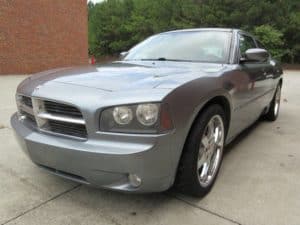 |
|||||||||||||||||||||||||||||||||||
|
|||||||||||||||||||||||||||||||||||
2007 Charger |
|||||||||||||||||||||||||||||||||||
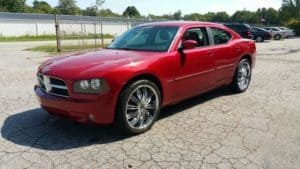 |
|||||||||||||||||||||||||||||||||||
|
|||||||||||||||||||||||||||||||||||
2008 Charger |
|||||||||||||||||||||||||||||||||||
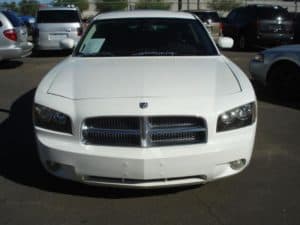 |
|||||||||||||||||||||||||||||||||||
|
|||||||||||||||||||||||||||||||||||
2009 Charger |
|||||||||||||||||||||||||||||||||||
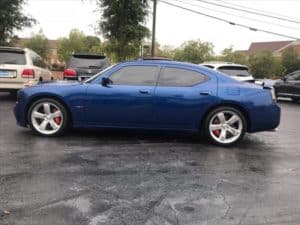 |
|||||||||||||||||||||||||||||||||||

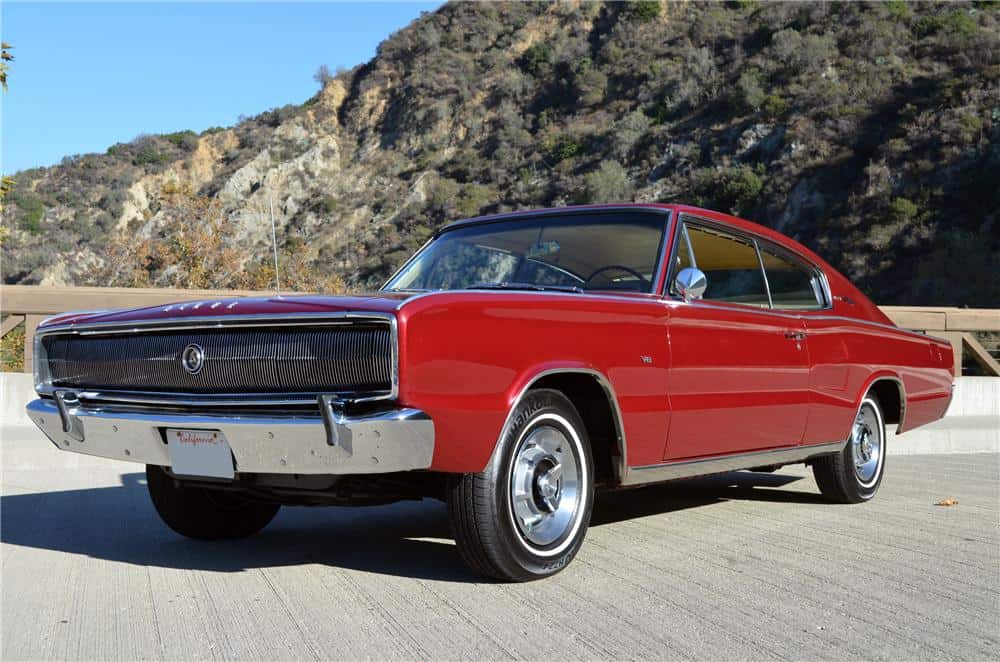
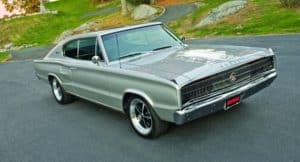
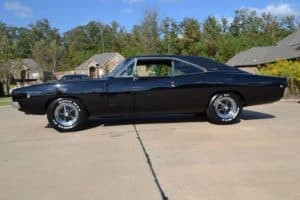
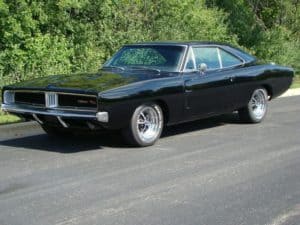
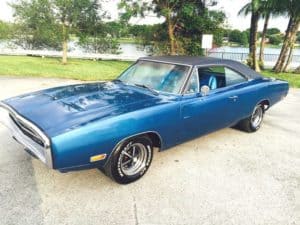
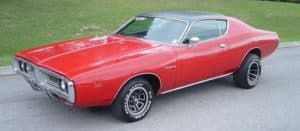
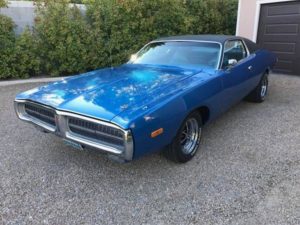
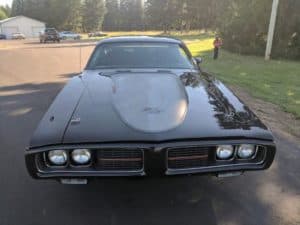
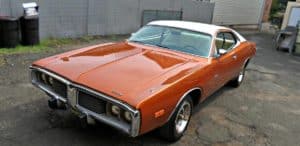

I sold a 1970 charger r/t . It had Daytona flags in the bumble bee stripes instead of r/t. I was the second owner. I brought it from a female that had it. Her husband died a she would not sell it to anyone for over 30 to 40 years. I caught her when she needed money
The stripes looks original. Wondering if Dodge ever build a 70 charger r/t with flags in the stripes instead of r/t